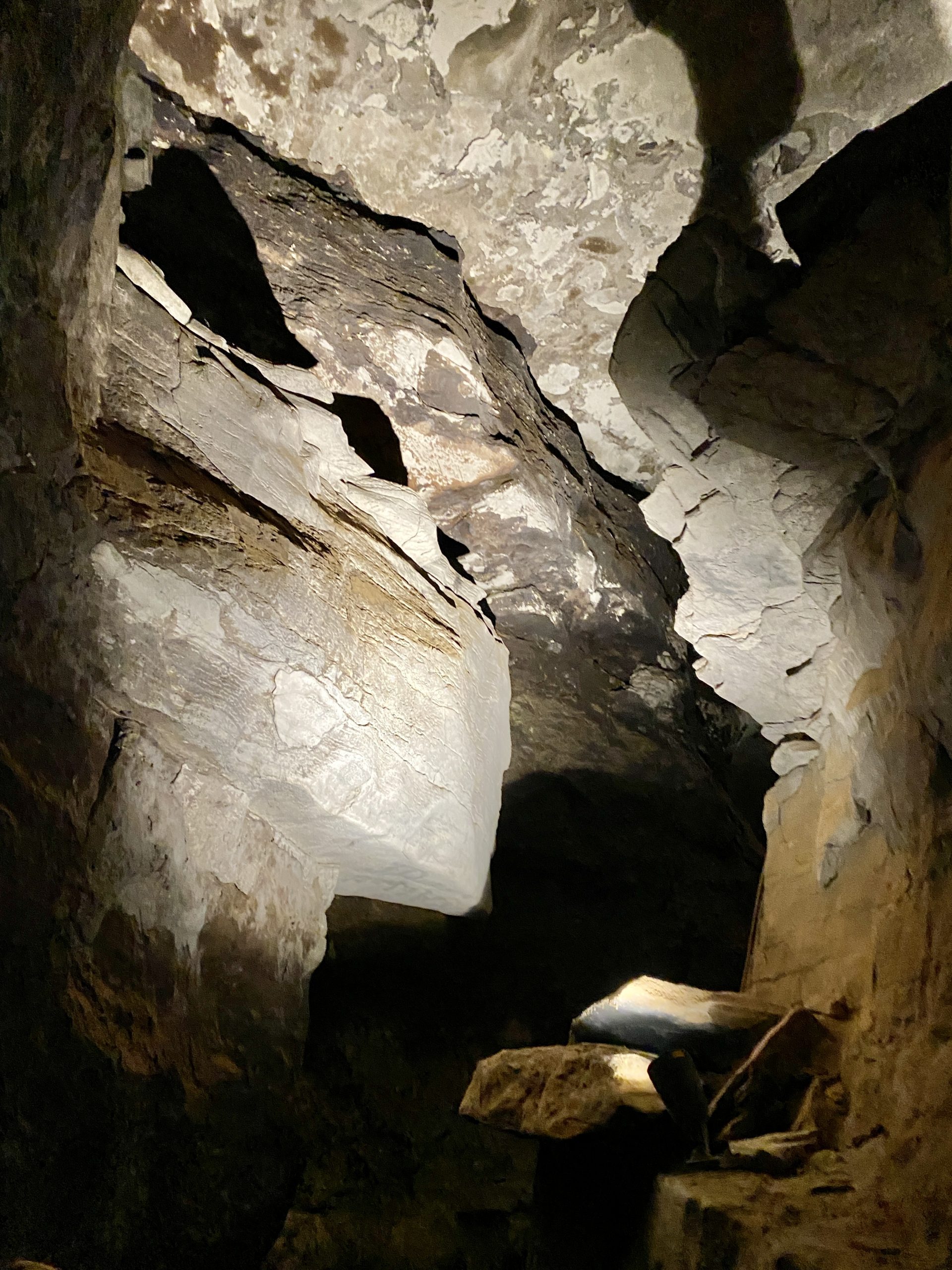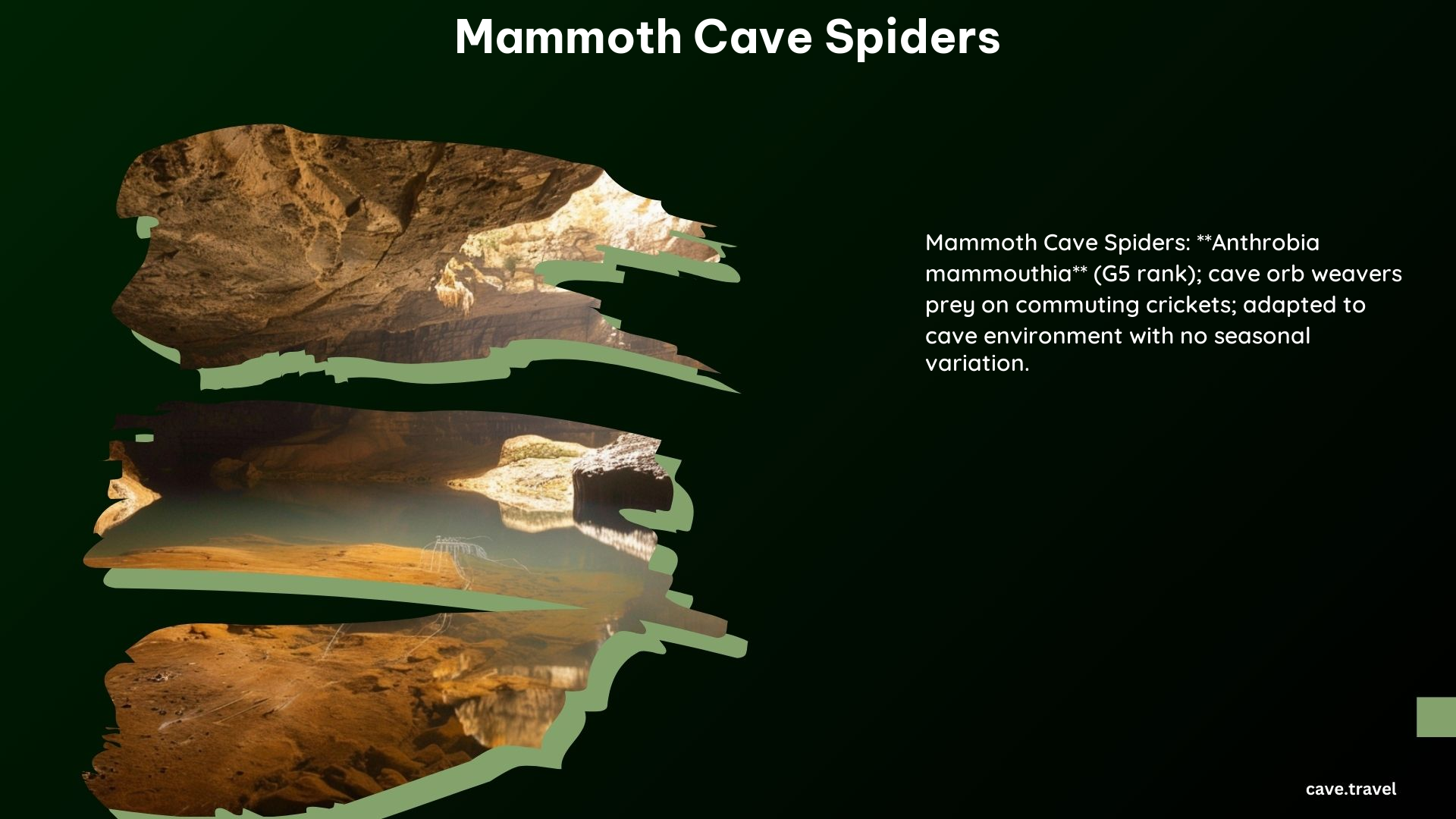Mammoth Cave National Park in Kentucky is home to a diverse array of spider species, including the unique Mammoth Cave Spider (Anthrobia mammouthia). These spiders have adapted to the cave environment and play a crucial role in the delicate ecosystem of the world’s longest known cave system.
Species of Spiders Found in Mammoth Cave

The Mammoth Cave ecosystem supports a variety of spider species, each with its own unique adaptations to the cave environment. Some of the notable spider species found in Mammoth Cave include:
-
Mammoth Cave Spider (Anthrobia mammouthia): This species is specifically adapted to the cave environment and is found only in Mammoth Cave and a few other nearby cave systems. The Mammoth Cave Spider is a small, pale-colored spider that lacks eyes and has elongated legs, which help it navigate the dark, narrow passages of the cave.
-
Cave Orb Weaver Spider (Nesticus cavicola): This spider constructs intricate orb-shaped webs in the cave, which it uses to catch prey such as cave crickets and other small invertebrates.
-
Cave Jumping Spider (Sphodros abboti): This spider is a skilled hunter that stalks and pounces on its prey, rather than relying on web-building. It is known for its impressive leaping abilities, which help it navigate the uneven terrain of the cave.
-
Cave Cellar Spider (Pholcus phalangioides): This long-legged spider is commonly found in the dark, damp corners of the cave, where it constructs its distinctive, tangled web.
Migration and Hibernation

While some spider species in Mammoth Cave may migrate or hibernate during colder seasons, the cave environment itself is relatively stable, with little seasonal variation in temperature and humidity. As a result, many of the cave-dwelling spiders and other invertebrates have adapted to this constant environment and do not exhibit the same migratory or hibernation behaviors as their surface-dwelling counterparts.
Role of Cave Orb Weaver Spiders in the Cave Ecosystem
The cave orb weaver spiders, such as the Nesticus cavicola, play a crucial role in the Mammoth Cave ecosystem. These spiders construct intricate webs that they use to capture prey, primarily cave crickets and other small invertebrates that travel in and out of the cave system.
By preying on these commuting organisms, the cave orb weaver spiders help to regulate their populations and maintain the balance of the ecosystem. This predation also helps to transfer nutrients and energy from the surface environment into the cave, supporting the diverse array of cave-adapted species that call Mammoth Cave home.
Additional Information for Caverns Touring Enthusiasts
Cost and Timings
The cost and timings of cave tours at Mammoth Cave National Park vary depending on the type of tour and the season. Visitors can choose from a variety of tour options, including the classic Mammoth Cave Tour, the Domes and Dripstones Tour, and the Frozen Niagara Tour, among others. Tour prices range from $12 to $55 per person, and tour durations can vary from 1 to 4 hours.
Directory and Hours
The Mammoth Cave National Park visitor center is open from 8:00 AM to 5:00 PM (Eastern Time) daily. For more information or to plan your visit, you can call the visitor center at (270) 758-2180 or visit the park’s website at www.nps.gov/maca.
Rates and Value
The value of the cave tours at Mammoth Cave National Park lies in the unique opportunity to explore the world’s longest known cave system and observe the diverse wildlife, including the fascinating Mammoth Cave Spiders, in their natural habitat. The tours provide a glimpse into the intricate and delicate ecosystem that has developed within the cave, and the chance to learn about the park’s rich natural and cultural history.
References
- https://www.reddit.com/r/spiders/comments/13srtg6/id_please_found_on_a_trail_in_mammoth_cave/
- https://explorer.natureserve.org/Taxon/ELEMENT_GLOBAL.2.120000/Anthrobia_mammouthia
- https://www.nps.gov/maca/learn/nature/animals.htm
- https://www.nps.gov/maca/learn/nature/insects.htm
- https://www.nps.gov/maca/learn/nature/caves.htm
